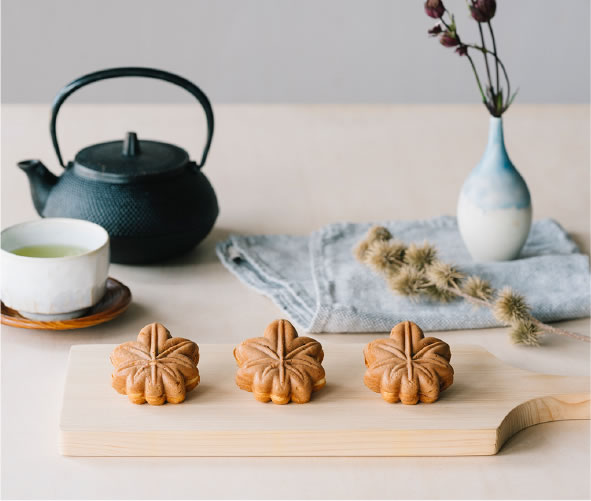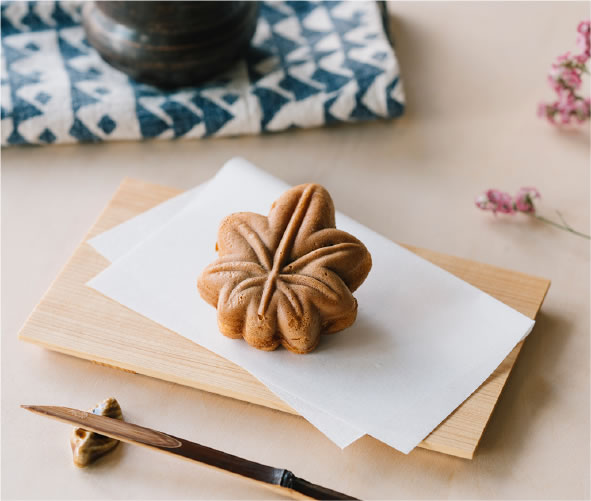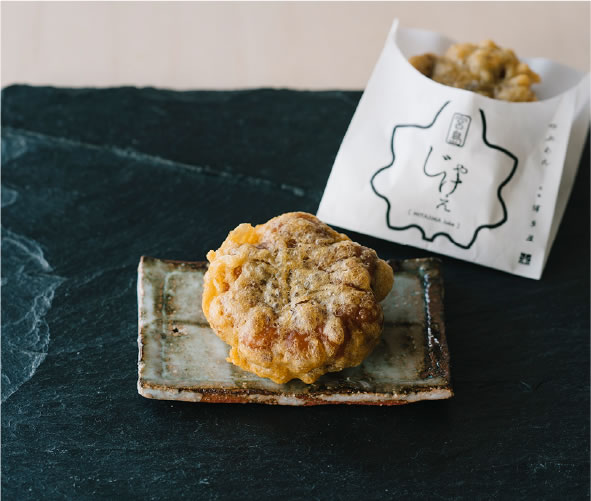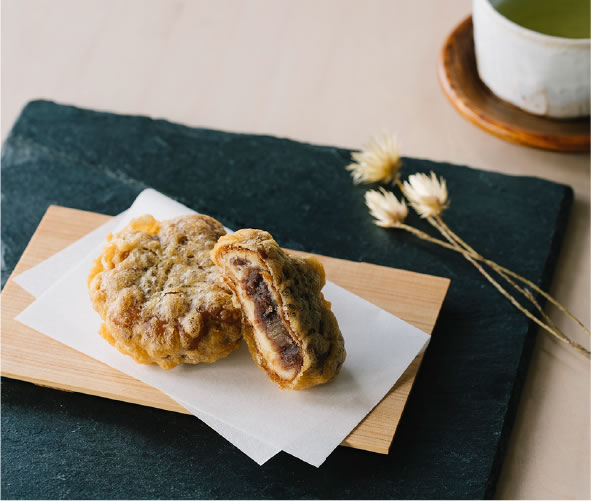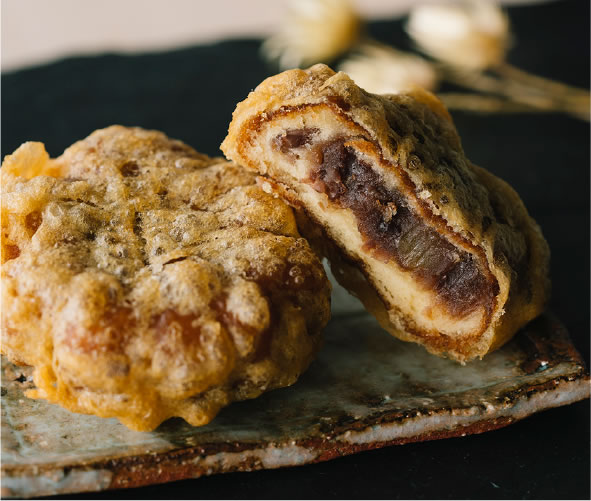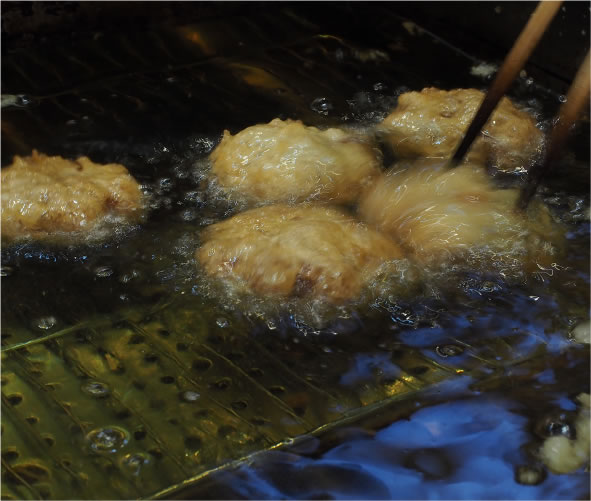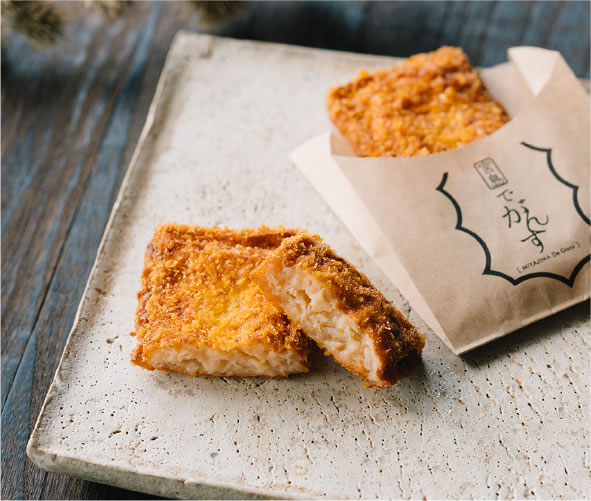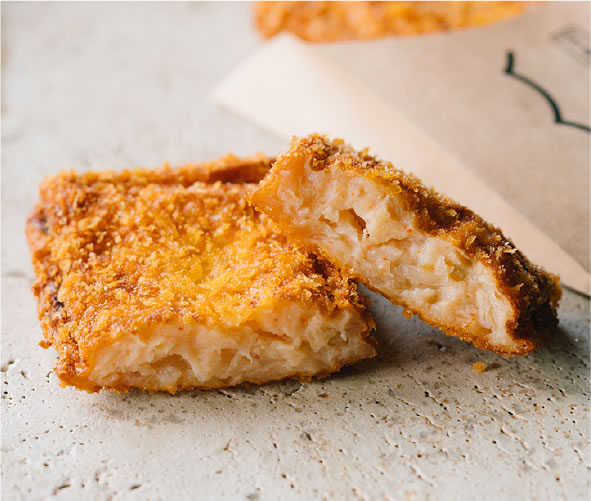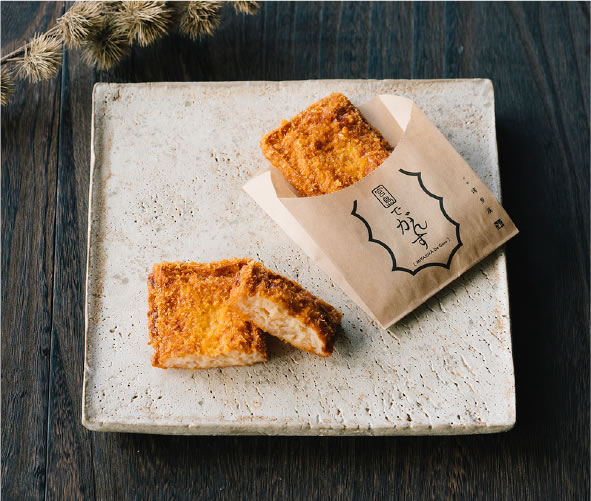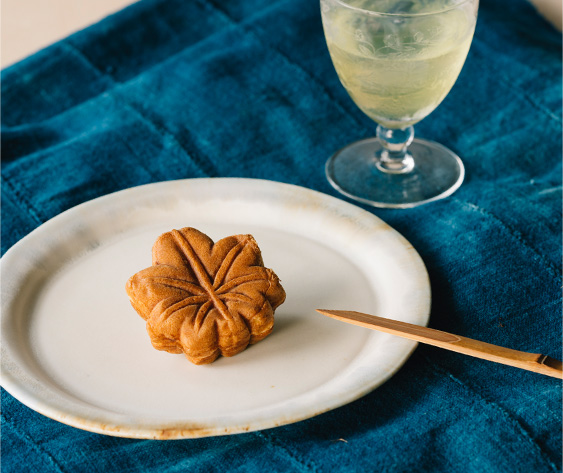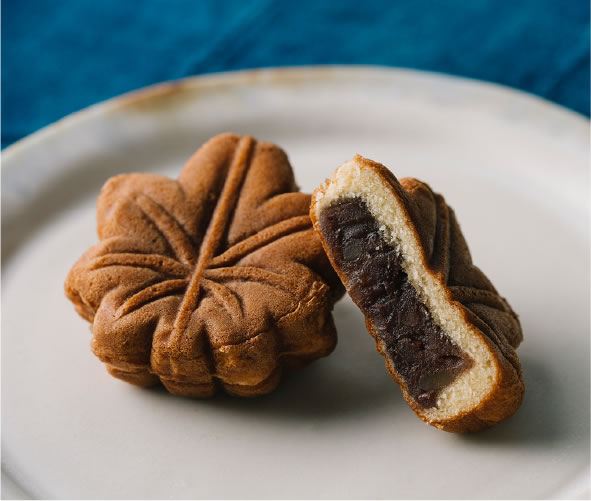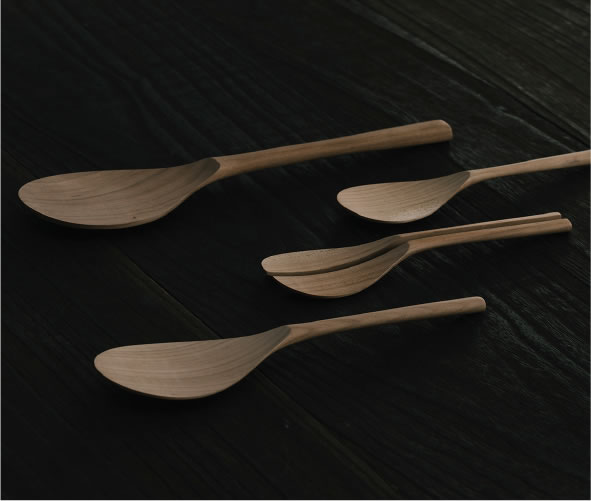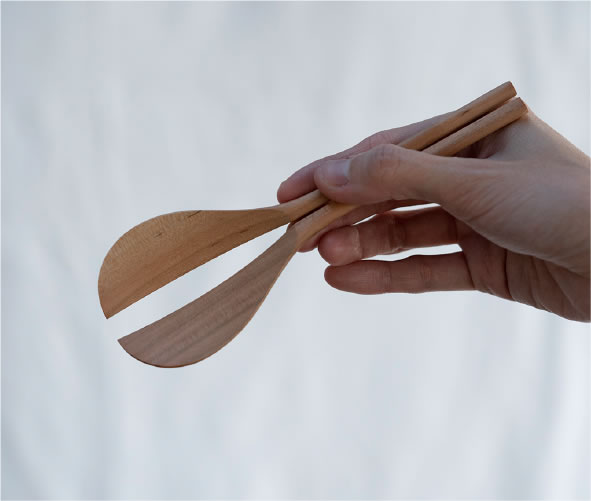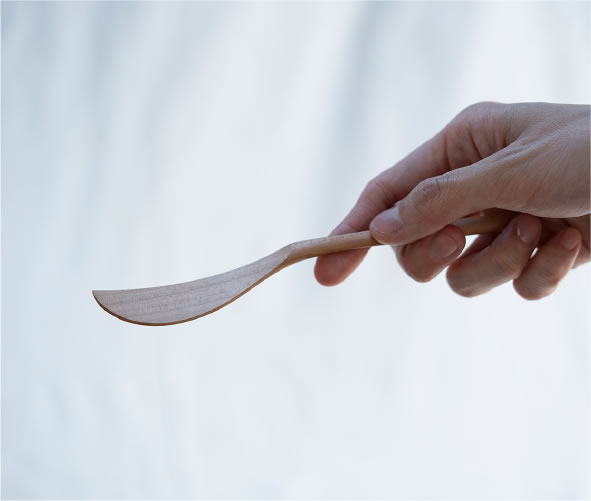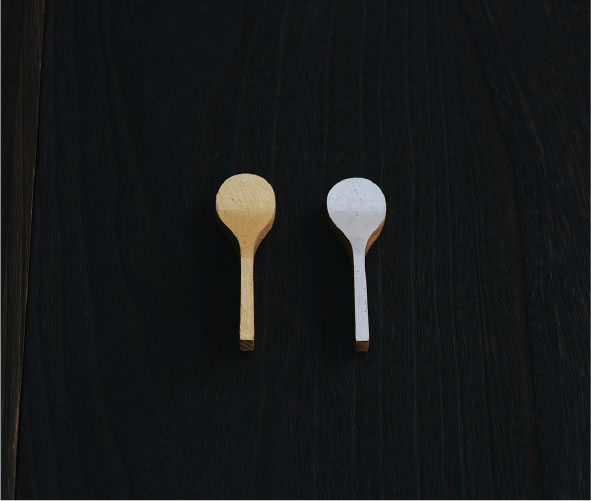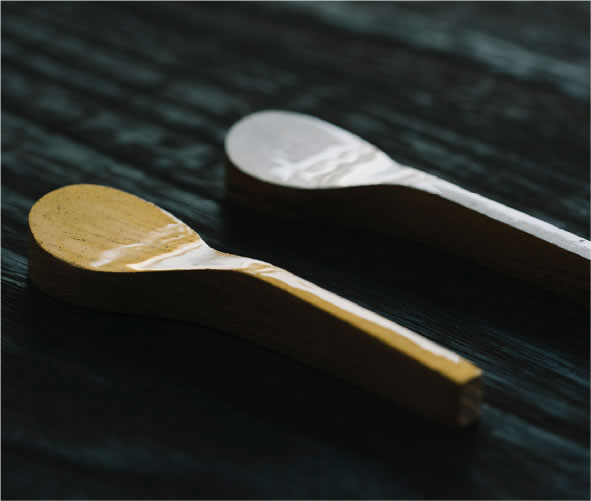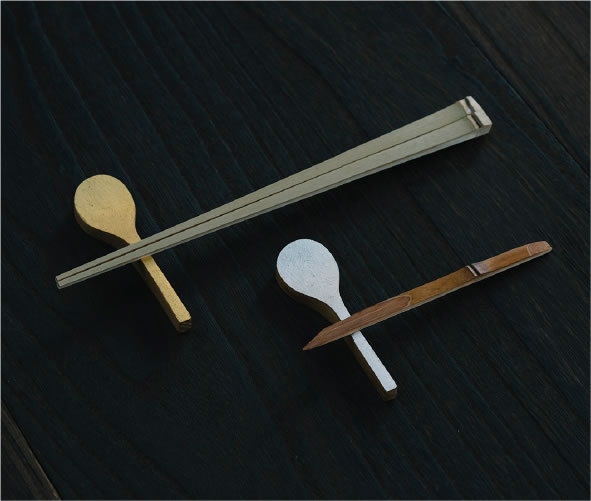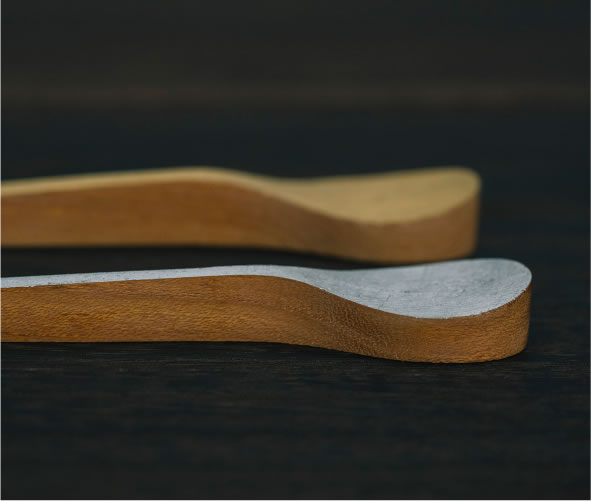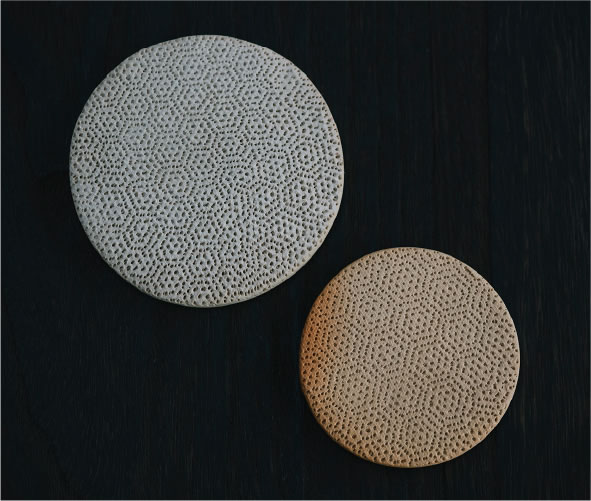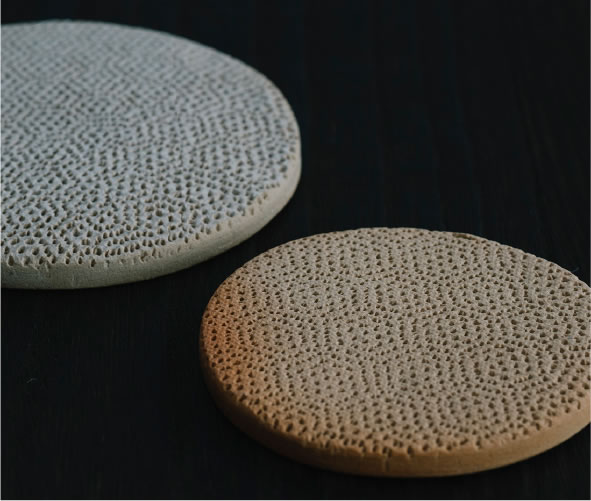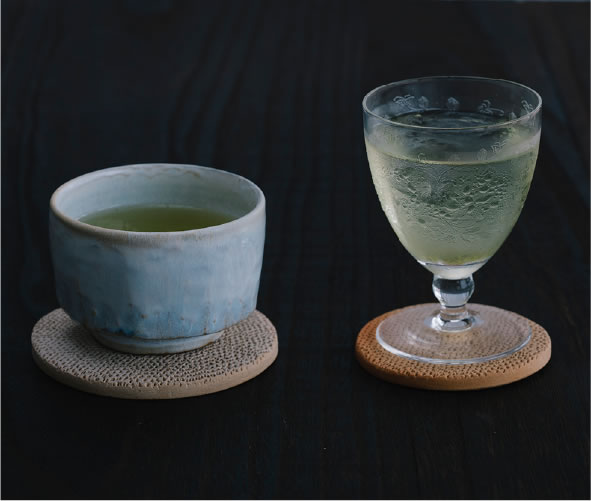博多屋の商品PRODUCTS
宮島の、味のかたち。
THE TASTE OF MIYAJIMA
もみじまんじゅうMomiji Manju
生地と餡の一体感と口どけにこだわった博多屋謹製もみじまんじゅう。ふんわりきめ細かな仕上がりのカステラ生地と自家製餡の織り成すほっとする味わいをお楽しみください。製造も行う店舗ではほかほかアツアツの焼きたてを召し上がっていただけます。
つぶあん・こしあん・抹茶・チョコ・クリーム・チーズ・もも・もみじの出逢い(瀬戸内有機レモン&藻塩仕立てのカステラもみじ)
Special care is put into Momiji Manju made at Hakataya that brings the batter and bean paste in unison to melt in your mouth. Enjoy the satisfying taste of soft fine castella cake and homemade bean paste. It’s freshly baked in-store so you can treat yourself to one hot off the mold. Eight flavors in all – tsubuan (chunky bean paste), koshian (smooth bean paste), matcha, chocolate, custard cream, cheese, peach, and momiji’s in love (Momiji castella cake enriched with seaweed salt and organic lemon from the Seto Inland Sea).
宮島じゃけえMiyajima Jake
もみじ饅頭をシンプルに衣で揚げる。
もみじまんじゅう屋のまかないおやつとして親しまれてきたものを
口当たり軽く上品に仕上げました。
Elegantly refined batter-coated and deep-fried simple snack traditionally enjoyed by workers at Momiji Manju shops.
宮島でがんすMiyajima De Gansu
ふっくらアツアツ、サクサクの衣の中身はクリーミーな魚のすり身。がんす製造の老舗、三宅水産とのコラボで刻み玉ねぎの甘みにちょっとピリ辛なアクセントがきいた新しい味に生まれ変わりました。
Fluffy and piping hot, inside this crispy coating is a creamy fish surimi. With the help of long-established gansu manufacturer Miyake Fisheries, we created a brand new flavor with the sweetness of chopped onion, and a bit of spice.
冷やしもみじChilled Momiji
博多屋自慢のきめ細かな生地は、冷やしても美味しいタルトケーキのようなサクッとした食感となめらかな口どけ。ひんやり優しい味わいをおやつにどうぞ。
Hakataya’s finely crafted batter is delightfully tasty when chilled too, with a tart-like texture and filling that melts in your mouth. Enjoy the gentle coolness for a refreshing snack.
宮島の、文化のかたち。
SEE THE CULTURE OF MIYAJIMA
宮島杓子BIWAMiyajima Shakushi BIWA
和食に欠かせない杓子というツールの原型「琵琶に着想を得た誓真杓子の形の美しさ」を食生活の変化や時代背景とともに読みなおし、原型の美を再発見すると同時に、現代の生活ニーズに合う新たなサイズ、利用法(6パターン:調理ベラ、飯ベラ、飯ベラ〈小〉、ジャムベラ、スプーン、バターナイフ)を提案します。
「飯を装う(よそう)」道具から、「食を装う(よそおう)」道具へと。
With the changes in our diet and backdrop of the times, we revisit the prototype of this tool essential for Japanese cooking called “shakushi” invented by Seishin, who was inspired by the beauty of the instrument, biwa. While rediscovering its original beauty, we propose new sizes and uses that meet the needs of modern living (six styles: cooking spatula, rice spatula, small rice spatula, jam spatula, spoon, and butter knife). We want it to be a tool for serving food, not just rice.
HAKU × BIWA 箸枕HAKU x BIWA chopstick holder
卓上最小の装いで特別な時間と空間を彩ります。箔と磨き、2つの伝統技術を重ねて。
【磨き】:6種のヤスリの工程で素地の木材を磨きのみで仕上げる。
【箔】:透けるほどの薄さの精緻である1/10000ミリの箔は下地の精度を忠実に拾い、木目持つ美しさを最大限に生かし切る。
With the tiniest decor on the table, we create a special time and ambience. A combination of two traditional techniques, gold, silver, and metal leaf and polishing.
[ polishing ] : Using a file, the surface of the wood is finished by polishing only.
[ gold leaf ] : Gold leaf that is 1/10000 of a millimeter, thin enough to see through, faithfully picks up the precision of the underlying material and brings out the beauty of the wood grain to its fullest.
宮島杓子の由来How Miyajima got its shakushi
現在全国で普及している杓子の発祥とされる宮島杓子の原型は、今から約200年前の寛政年間に神泉寺の僧誓真により考案されたもの(写真)です。おかゆから白米へ食文化が大きく変化した時代、杓子は当時のステイタスを表す最新のキッチンツールとして全国に広まり、杓子のことを別名宮島と呼ばれました。
The rice scoop popularly used in kitchens across the nation was invented by a Shinsenji Temple priest roughly 200 years ago during the Kansei Era (late 18th century). During a time when Japan’s culinary culture shifted from eating porridge to white rice, the shakushi, also known as Miyajima, spread throughout the country as a kitchen tool and a status symbol.
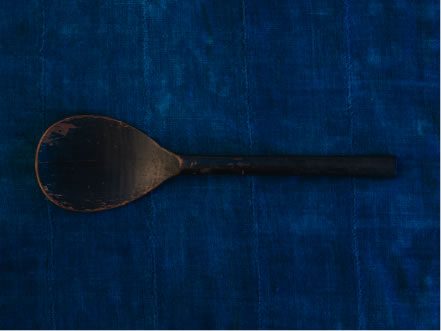
宮島お砂焼き SAMONMiyajima Osunayaki SAMON
社殿に打ち返す波にゆらぐ砂紋と嚴島神社の神紋(三つ盛り二重亀甲に剣花菱)を緩やかに重ね合わせ、五感を通して感じていただけるSAMON。
Softly bringing together the sand prints that gently sway in the waves that brush up against the shrine building and the Itsukushima Shrine crest (triple hexagon, double-tortoiseshell with swords and petals), SAMON lets you feel with all of your senses.
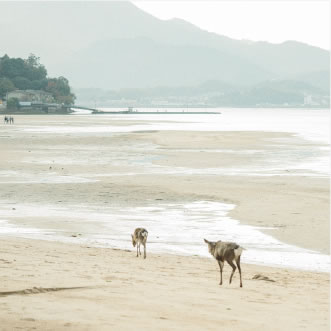
宮島お砂焼きの由来The origins of Miyajima Osunayaki
安芸国(現在の広島県西部)の人々は、旅に出る際に道中安全の参拝祈願をし、嚴島神社本殿下の砂をお守り(お砂守り)として頂き旅に出ました。そして、無事旅から戻ると旅先から持ち帰った砂を足して倍にしてお返しする「お砂返し」という習俗がありました。江戸時代(天明・寛政期)にその神聖なお砂を混ぜた陶土で管弦祭用の祭器を作ったのが「宮島焼き」の由来とされています。
縁起物として愛され続けてきた宮島焼は、「砂を混ぜる」というその行為から「お砂焼」とも呼ばれるようになりました。
The people of Akinokuni (now western Hiroshima Prefecture) used to come to Itsukushima Shrine to pray for a safe trip before heading out on a journey and would take with them sand from underneath the main hall for protection, calling it osuna-mamori, or sand amulet. Later when they returned safely, they would add sand from their destination and return the doubled amount. This custom was called osuna-gaeshi.During the Edo Period (Tenmei and Kansei Eras) ritual implements used in the Kangensai Festival were made with clay that had this spiritual sand mixed in. This was the beginning of the pottery known today as Miyajima-yaki.
Because of the sand (suna) mixed into the clay, this good-fortune pottery loved by the people also came to be known as Osunayaki.


